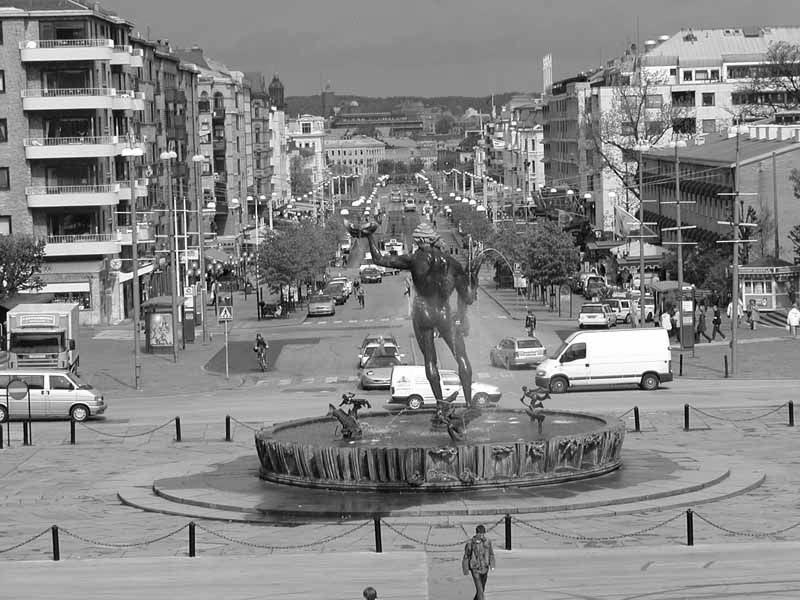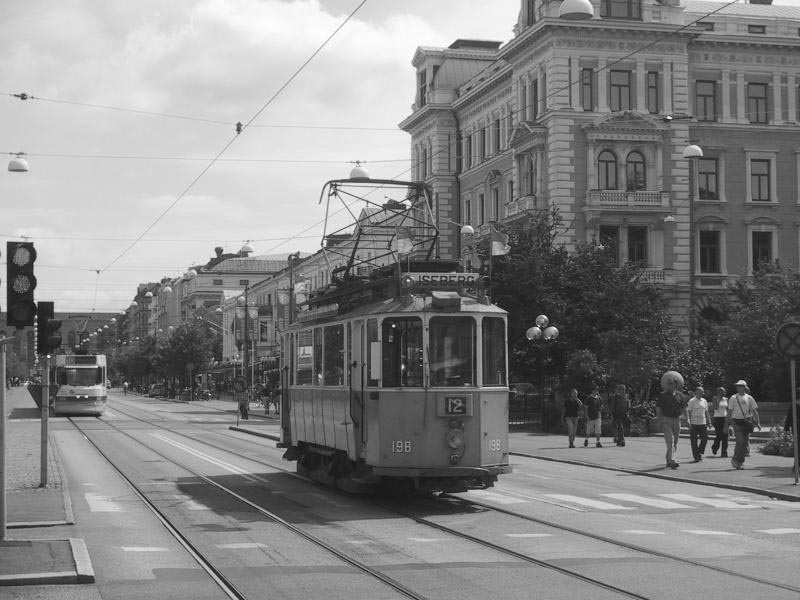How much do you know about Göteborg?
-
 Who is that Greek god standing there? And how much do you know about Göteborg, Sweden's second city?
Who is that Greek god standing there? And how much do you know about Göteborg, Sweden's second city? -
-
Sweden’s second city, Göteborg, has a population of 489,787 and was named after the götar, the inhabitants of Gothia, now southern Sweden. The river on which Göteborg sits, the Göta Älv was the spot for the fort Göta borg built to protect the port created to be Sweden’s commercial window to the west. How much else do you know about Göteborg?
-
 Spårvagn i Göteborg. The Göteborg tram network is the largest in Scandinavia. The trams perform about 2,000 trips and cover 30,000 km per day. The first tram line in Göteborg was started in 1879 as a horse-drawn tramway. When Sweden's switch to right-hand traffic in 1967 made existing unidirectorial trams obsolete, Göteborg was one of only two cities in Sweden to maintain its city-center tramway; the other city is Norrköping.
Spårvagn i Göteborg. The Göteborg tram network is the largest in Scandinavia. The trams perform about 2,000 trips and cover 30,000 km per day. The first tram line in Göteborg was started in 1879 as a horse-drawn tramway. When Sweden's switch to right-hand traffic in 1967 made existing unidirectorial trams obsolete, Göteborg was one of only two cities in Sweden to maintain its city-center tramway; the other city is Norrköping. -
-
1. Who described Göteborg as the most beautiful of all Swedish cities? (1.Carl von Linné X. Carl Michael Bellman 2. Verner von Heidenstam)
-
2. What king grounded the community that served as a predecessor to Göteborg? (1.Erik XIV X.Gustaf I 2.Karl IX)
-
3. Göteborg burned down in 1611 – but who set the city on fire? (1.The Norwegians X.The Danes 2. The Finns)
-
4. What engineer made the first city plan? (1.Herman Johann X. Johan Schultz 2. Sigmund Schultz)
-
5. What Greek god sits on the top of Avenyn? (1.Eros X.Zeus 2.Poseidon)
-
6. The architect Victor von Gegerfelt designed one of the most famous buildings in Göteborg, which one? (1.Fiskekyrkan X.Läppstiftet 2. Centralstationen)
-
7. Why is Göteborg sometimes called “little London”? (1. Because the blueprint of the city is similar to that of London X. Because of intensive trade with England during the 18th century 2. Because many Brits moved to Göteborg during the 16th and 17th centuries)
-
Key:
1. 1.Carl von Linné
2. 2.Karl IX
3. X.The Danes
4. X.Johan Schultz
5. 2.Poseidon
6. 1.Fiskekyrkan
7. X.Because of intensive trade with England during the 18th century. -
-
